100 tunnels under control
Due to its mountainous topography, Italy is a country rich in road tunnels. In the Lombardy region, a new supervision and remote control system has been designed and implemented by Gemmo S.p.A. Based on the PcVue SCADA system from ARC Informatique, it ensures the comfort and safety of users along over 140km of tunnels.
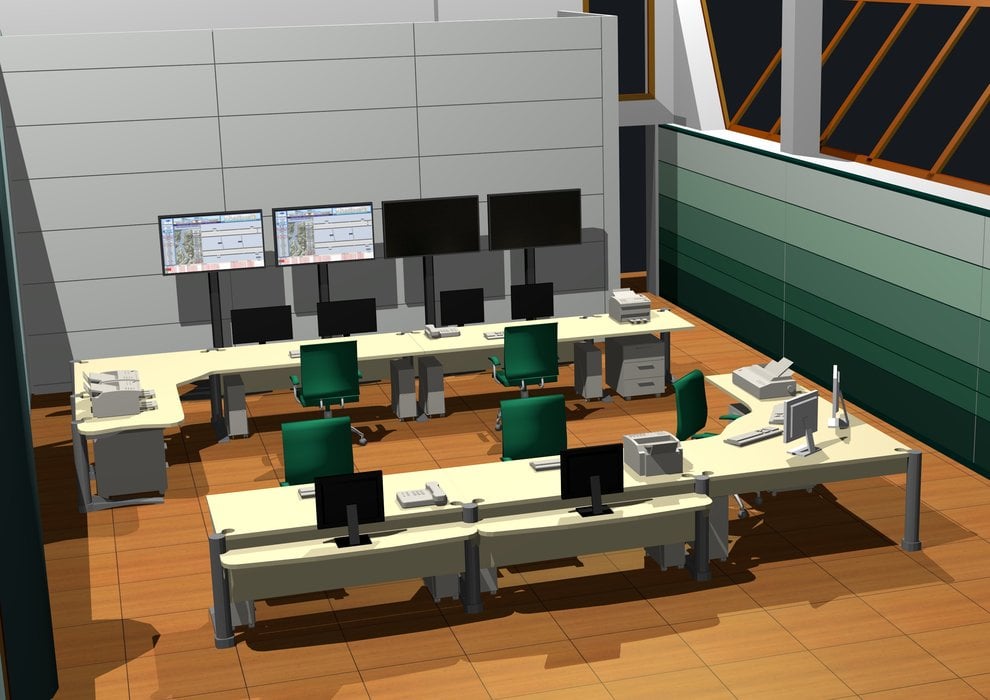
Fig.1 – View of the ANAS operations centre, located in Bellano (Lecco)
The wide alpine arc that surrounds and contains Italian territory is crossed by roads which include many tunnels. The tunnels are of variable vintage and the plant used inside them is inconsistent, due to differing implementation dates and technologies adopted. Thanks to a new wide-ranging project, the tunnel system of the road network is now managed by a new supervision and control system that is unique due to its size and complexity.
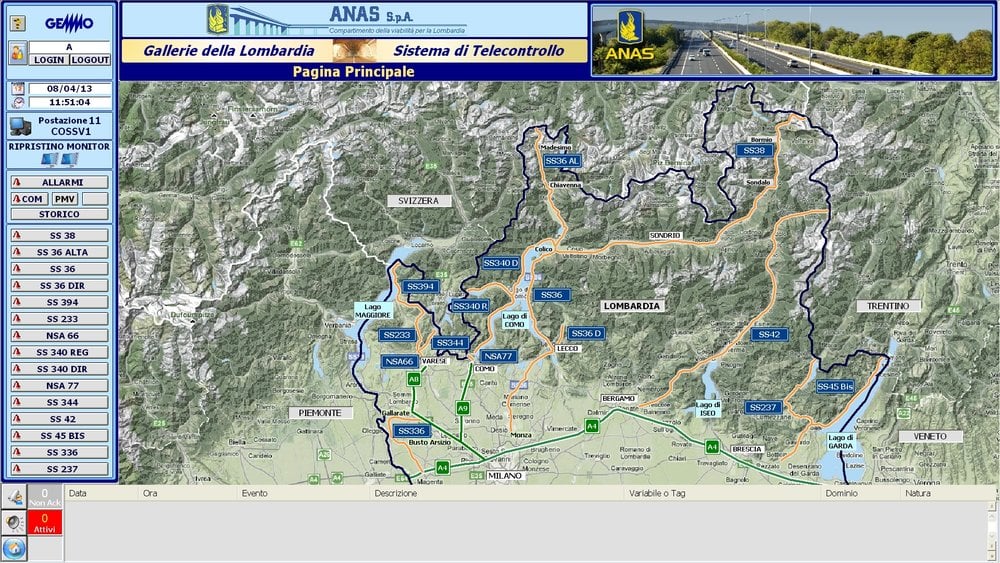
Fig.2 – The supervision and telecontrol system, designed and implemented by Gemmo S.p.A. and based on PcVue SCADA from ARC Informatique
€140 million Project Financing
The application falls within a project concerning the technological requalification and safety management of approximately 100 tunnels on state roads managed by ANAS S.p.A in Lombardy. The wide scope includes the technological requalification of the tunnels and standardization or renovation of power, lighting, ventilation, video-safety and data transmission plants. The single or dual ‘pipe’ tunnels have lengths ranging from 250m to 5km.
The estimated value of the work is approximately 140 million euros, 50% financed by ANAS and 50% by the private sector. Tunnel Gest (a company whose majority shareholding is held by Gemmo S.p.A.) will be responsible for the management of the realized project for the next 17 years, starting in June 2013 when the 3-year construction and requalification period will be complete. This time frame, which was defined in the financial plan at the start of the project, will allow the company make a return through the provision of services such as plant maintenance. The road management will remain ANAS’s responsibility.
“The first stage, nearing completion, scheduled the technological requalification of the tunnels according to ANAS guidelines, which adopt the main European standards in terms of tunnel safety,” says Ing. Ciro Ascione, Systems Business Unit Manager at Gemmo S.p.A. “Depending on their length, the tunnels are provided with plant of different complexity: from simple lighting, to equipment for ventilation, pollution analysis, heat detection, video-surveillance and image analysis, SOS management, audio for emergency situations, variable-message display panels and radio communication to support rescue organizations”. Each tunnel is provided with its own PLC-based automation system and is connected for supervision and control to the ANAS operations centre, located in Bellano (Lecco), through a communication network (WAN) using both fibre optic and microwave technology. For the integration of local systems with the WAN the Modbus TCP/IP protocol has been widely used because it allows direct and reliable control of peripherals and relevant data.
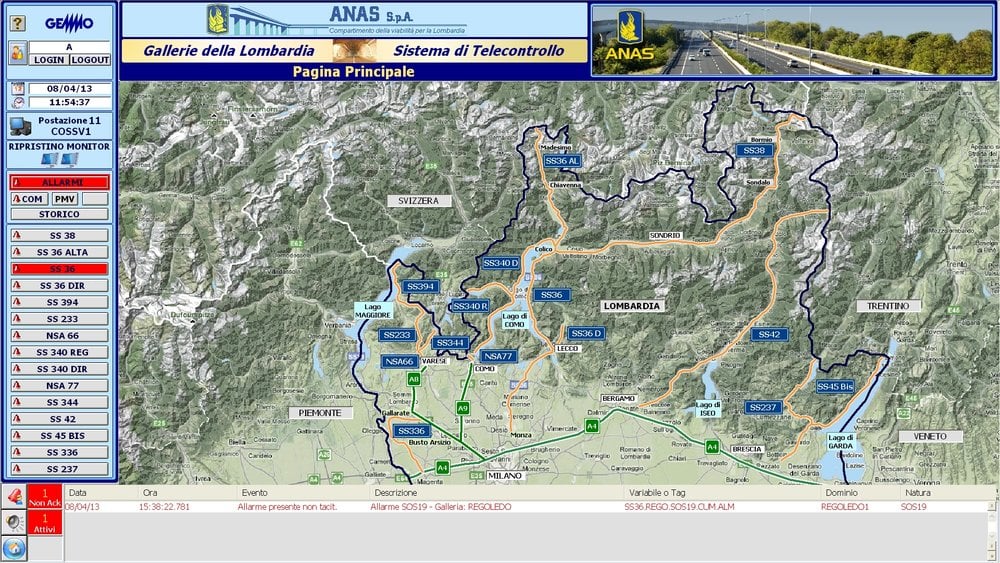
Supervision and remote control
The supervision and remote control system configured by Gemmo S.p.A., a certified OEM partner of ARC Informatique, is based on a customized application of PcVue SCADA. Approximately 50,000 data points, 800 network nodes and over 500 graphical pages are managed.
From the main page which offers a system overview, it is possible to access the various tunnel subpages listed on the display. When a subpage is accessed an information window opens which aids navigation within the subpage. At the same time, when a particular system is selected (the lighting system for instance) it is possible to visualize its status in any or all of the tunnels. Finally, by opening the information window of a particular piece of equipment it is possible to visualize several aspects of its operational status, set alarm limits, visualize alarm notifications and by-pass the local control logic to remotely control the equipment.
In fact all represented objects can operate in either automated or remote manual mode. In the case of a problem (like fire risk or high pollution) the relevant automated procedures take over, but the operator can manually intervene for better management of the situation. For instance, when an alarm procedure due to an excessive pollution in a tunnel is started automatically, the operator can watch the situation through the video system (composed of approx. 1500 cameras) and perhaps override fan settings and variable-message display panels to facilitate the outflow of the vehicles from the tunnel before the tunnel access is inhibited.
The hardware includes two servers in a hot backup configuration with a further server devoted to database management, two clients for ANAS, two clients for Tunnel Gest and one client for the Traffic Police. Two maintenance clients are used by the Gemmo team.
Each workstation at the control centre has two 42” monitors side-by-side which can be used independently. This allows, for instance, management of the SOS system in a tunnel and simultaneous monitoring of the complete system.
“We centralized all the tunnel plant monitoring at the ANAS operating centre of Bellano,” Ing. Ascione explains. “The SCADA shows the operator a series of video graphic maps that supply the status of all equipment in real time.”
Thanks to the network connection, it is possible to connect through the web to the individual controllers. Locally, using a portable PC, it is also possible to connect as a PcVue client and query a controller, or to navigate with a browser to the network server.
Starting from the graphical pages displayed by the supervision system the operator can instantly know where an alarm was triggered or if a user is calling from inside a tunnel.
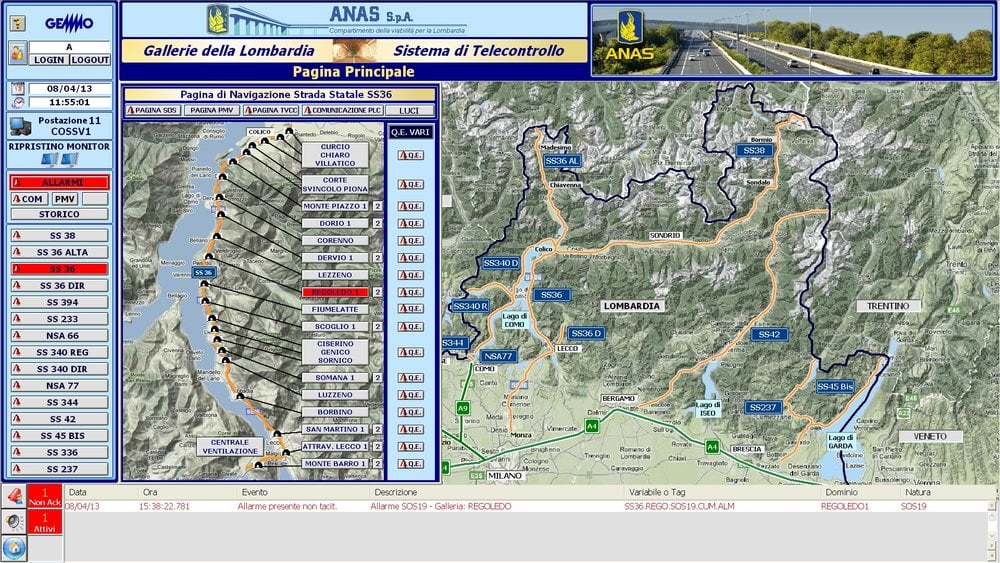
Fig.4 – Main page with alarms and info window for the SS36 road
Maximum safety
The whole system is characterized by several safety levels. In every tunnel there is a redundant LAN connected to the general WAN, to which all automation peripherals and subsystems refer. The automation system of every tunnel is independent of the centre and therefore all the subsystems interact through the tunnel LAN.
“When an SOS is triggered from any tunnel, a general alarm procedure is activated,” says Ing. Ascione. “From the main page, with a maximum of two steps, the operator is always guided to the point indicated by the alarm.”
The historical data is stored for approximately two months, depending on the number of recorded alarm events.
In case of over-pollution the ventilation is activated with an intensity that is a function of the detected pollution level, increasing until the potential closure of the tunnel. At the same time, user warnings are shown on the variable message display panels and possibly the audio system is activated, inviting the users to abandon vehicles. All this information is monitored by the SCADA system, giving the operator the opportunity of overriding the automatic system to directly interact with the involved systems by remote control. Tunnels have mainly axial ventilation, but some of them also have cross- or half-cross ventilation. Substantially, they have a ventilation central unit with ducts.
In the SCADA main page the most important information is collected: the ventilation level, the status of the sign system and the pollution with different settable thresholds. Moreover, the status of every object is shown. In the simulation mode it is possible to change the alarm thresholds. Special algorithms are incorporated. For instance, in the ventilation system, algorithms prevent oscillations by taking into account the dilution power of the air. Moreover, it is possible to cycle fan operation so that all fans simultaneously reach the number of hours scheduled for the programmed maintenance, minimising normally invasive interventions (the tunnel must be closed).
In case of fire detection, the ventilation system is driven not only by opacity and CO sensors, but also by the image analysis and thermometric system. The operations centre can intervene with messages that directly reach drivers through the FM radio system. The fire-fighting system is based on one or more pumping and pressurization units that guarantee the water supply. The storage tanks provide flow rates from 600 l/m for tunnels with length greater than 1000m, or a flow rate of 300 l/m for tunnels with length between 100 and 500m; special fire hoses are located in SOS containers arranged every 150m within the tunnels. The containers are also provided with VOIP phone communication equipment that is integrated within the network.
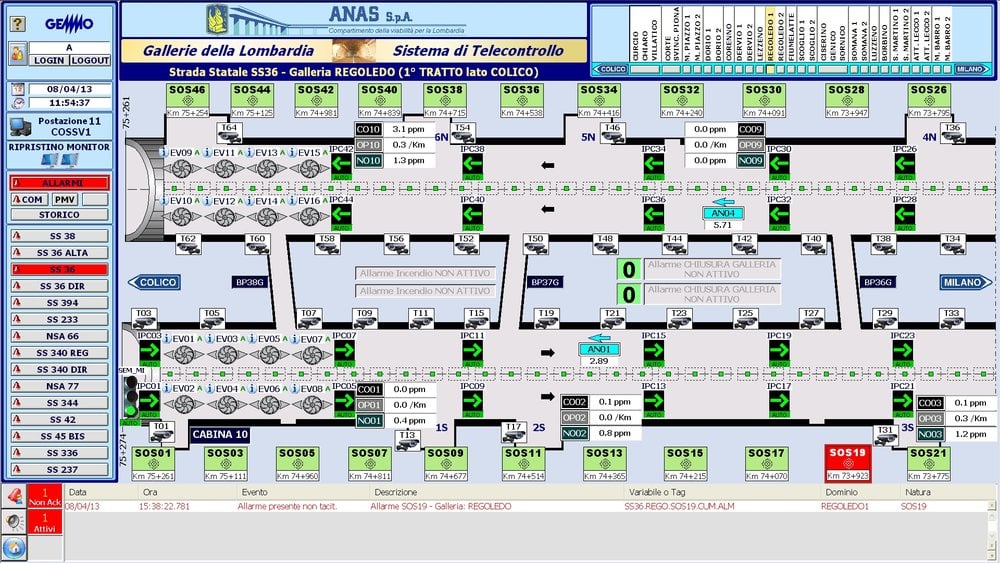
Fig.5 – Main page with alarms showing the complex Regoledo tunnel
The integrated video system allows not only video surveillance, but also image analysis. It can operate on-demand, on operator request, or on event. Through image analysis, for instance, it is possible to detect a stationary vehicle due to accident or fault, a vehicle driving against the traffic, the presence of smoke, the presence of pedestrians on the roadway, or other alarm situations.
The video system is independent but integrated. “We developed interfaces on PcVue to be able to access special images and we also created an interface to the video system dedicated to the Traffic Police, who have an operational headquarters in Bellano centre,” says Ing. Ascione.
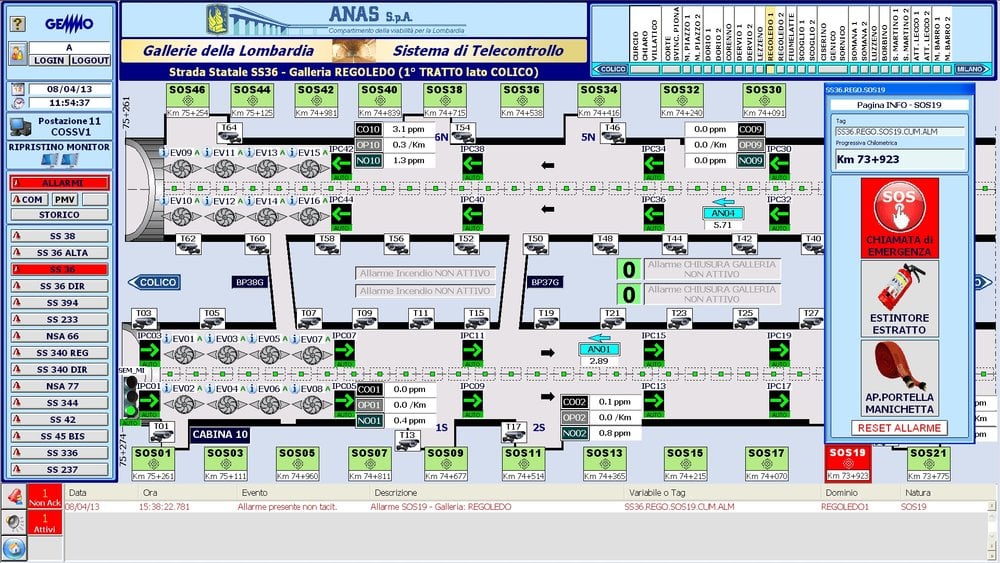
A fully open system
“We selected ARC Informatique’s PcVue because we appreciated that the system is really open,” says Ing. Ascione. “The openness is fundamental in our work as system integrators, because we can get inside the product to customize it and better use its capabilities, while exploiting the 50 years of experience that we acquired in the road industry. On PcVue we combined our specific know-how with the most advanced SCADA technology to reach a double target: on one hand, to be able to constantly monitor all the plant by presenting an interface that is relatively user-friendly while providing all the relevant information; on the other hand, to be able to collect the details that the technicians require to keep the plant efficient.” Gemmo S.p.A. has therefore used a single tool, but with two completely different purposes. A manager needs to use the graphical pages tool to better monitor the events on the road. On the other hand, the technician uses the tool with such detail that he/she can make a diagnosis and therefore prevent a malfunction. “This is the purpose of the concessionary company,” Ing. Ascione emphasizes. “By keeping the plant operating efficiently through adequate remote control, we are able to prevent faults and to guarantee ANAS that they can perform their job, with the ultimate target of improved safety for the users.”
Further benefits of PcVue for the system integrator include online modification and the possibility of editing the graphic pages in text format to perform a high volume of modifications in a short time: in fact, in applications of this size, the capability of parallel working on multiple pages speeds up the construction.
“We understood the graphical editor of PcVue, because it was also used by FactoryLink®, a product that we knew in depth. This was another plus of the ARC Informatique solution and another reason why we selected it. We have been able to carry on to this platform all the know-how and the solutions that we developed with FactoryLink®,” adds Ing. Ascione.
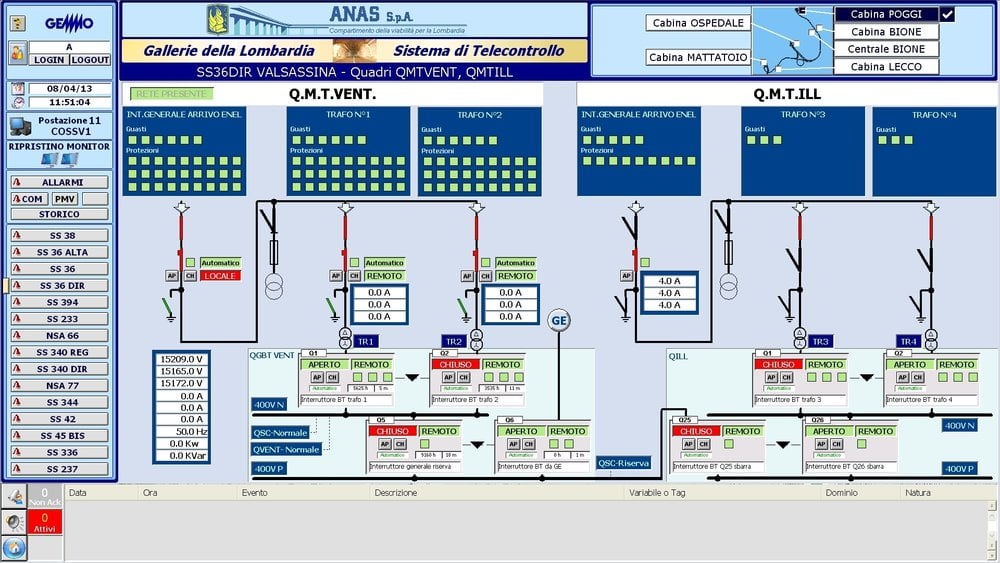
Future developments
“Our application based on PcVue is therefore an efficient management tool at ANAS’s disposal,” concludes Ing. Ascione. A future expansion of the system will concern the energy management system. This will allow ANAS to monitor consumption and to save energy by switching the lights off when the traffic in a tunnel is moderate and by regulating the fans as a function of the pollution level reached inside a tunnel.
Notes on the Gemmo Group
The Gemmo Group has been working since 1919 in the field of infrastructure and services: the Group plans, designs, builds and maintains all kind of M&E systems, railway systems and public lighting systems and it provides Facility Management Services to both private and state-owned companies throughout the world. Gemmo Holding is the parent Company of the operational companies: Gemmo S.p.A., Gemmo International and Gemmo Participations. In line with market requirements, the Gemmo Group has diversified its operating range by integrating manufacturing and construction with technology maintenance and management services. By offering the full spectrum of services required to complete complex projects all under one roof, Gemmo guarantees high-quality products backed up with high-quality services.

